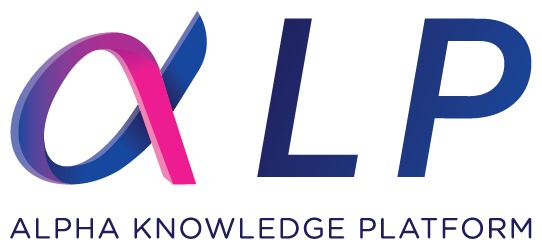TickerTape
Weekly Global Stablecoin & CBDC Update

This Week's Stories
The National Bank of Kazakhstan received the Pioneering CBDC Initiative Award at the CB+DC Conference for advancing the Digital Tenge project, competing against central banks from Switzerland, UAE, Hong Kong, and Ghana. The honor recognizes Kazakhstan’s groundbreaking work emphasizing financial inclusion, sophisticated technical design, and strategic vision for digital money’s future. Conference organizers praised the project as setting benchmarks for purpose-driven, impactful, and sustainable central bank digital currency design. Chief Digital Officer Binur Zhalenov highlighted the Digital Tenge’s technological sophistication, reliability, and potential to unlock opportunities including fast payments, innovative financial services, and secure fund storage. The NBK has spearheaded the project since 2021 as a natural extension of Kazakhstan’s growing digital finance ecosystem.
Key Takeaways:
- Kazakhstan’s Digital Tenge wins Pioneering CBDC Initiative Award competing against Switzerland, UAE, Hong Kong, Ghana
- Award recognizes financial inclusion focus, sophisticated technical design, and strategic vision
- Conference organizers praise project as benchmark for purpose-driven, sustainable CBDC development
- Digital Tenge offers fast payments, innovative services, and secure storage capabilities
- NBK leading project since 2021 as extension of country’s digital finance ecosystem
- Recognition underscores Kazakhstan’s advanced position in global CBDC development
Why It Matters:
- Demonstrates emerging market leadership in practical CBDC implementation and innovation
- Shows successful focus on financial inclusion rather than just technological advancement
- Could influence other developing nations’ approaches to CBDC design and deployment
- Validates comprehensive strategy combining technical sophistication with social impact
- May accelerate international collaboration and knowledge sharing on CBDC best practices
- Reflects growing recognition of CBDCs as tools for economic development and financial inclusion
Korea Blockchain Week 2025 commenced in Seoul with over 10,000 attendees from 100+ countries, featuring keynotes from industry leaders, institutional investors, and government officials. The six-day conference (September 22-28) focuses on blockchain’s transition from experimental technology to institutional infrastructure, with special emphasis on stablecoins, tokenization of real-world assets, and Bitcoin as strategic reserve asset. The program includes presentations from Samsung, Coupang, and major Korean financial institutions announcing stablecoin initiatives, alongside international speakers from Circle, Tether, and Ripple. Government officials discuss South Korea’s shift from CBDC development to private sector stablecoin support, while venture capital sessions explore the projected $1.4 trillion stablecoin market by 2030. The event reinforces Seoul’s position as Asia’s blockchain capital.
Key Takeaways:
- Korea Blockchain Week opens with 10,000+ attendees from 100+ countries in Seoul
- Six-day conference focuses on blockchain transition to institutional infrastructure
- Features Samsung, Coupang announcements on stablecoin market entry
- Government sessions discuss shift from CBDC to private stablecoin support
- Venture capital panels explore $1.4 trillion projected stablecoin market by 2030
- Reinforces Seoul’s position as Asia’s blockchain and digital asset capital
Why It Matters:
- Demonstrates Asia’s growing leadership in blockchain technology and digital asset adoption
- Shows Korean commitment to becoming global hub for stablecoin innovation
- Could accelerate institutional adoption through high-profile corporate and government participation
- May influence other Asian countries to develop similar blockchain-friendly policies
- Validates global recognition of Korea as key player in digital asset ecosystem
- Reflects broader transformation of blockchain from niche technology to mainstream infrastructure
The U.S. Treasury Department opened a formal “advance notice of proposed rulemaking” with a one-month public comment period through October 20 to gather information for implementing GENIUS Act stablecoin regulations. The Treasury seeks input on complex issues including sanctions obligations, anti-money laundering compliance, tax matters, state versus federal oversight balance, and reserve asset custody requirements. The notice poses dozens of specific questions such as whether additional clarity is needed regarding reserve asset custody requirements and comparability with foreign stablecoin regulatory regimes. This preliminary step will inform Treasury’s development of comprehensive regulations addressing prohibitions on issuers, sanctions compliance, AML requirements, and regulatory coordination between various federal entities involved in stablecoin oversight.
Key Takeaways:
- Treasury opens one-month public comment period through October 20 for GENIUS Act implementation
- Advance notice seeks input on sanctions, AML compliance, tax matters, and state-federal oversight balance
- Notice poses specific questions about reserve custody requirements and foreign regulatory comparisons
- Preliminary step will inform comprehensive regulations addressing issuer prohibitions and compliance
- Multiple federal entities coordinating on diverse aspects from sanctions to consumer protection
- Crypto businesses and public can weigh in on complex regulatory implementation issues
Why It Matters:
- Demonstrates systematic approach to translating legislation into practical regulatory framework
- Provides crypto industry opportunity to influence final stablecoin regulation implementation
- Shows Treasury commitment to comprehensive oversight addressing financial stability and illicit finance
- Could establish global benchmark for stablecoin regulation through thorough stakeholder engagement
- May accelerate U.S. stablecoin market development through regulatory clarity and predictability
- Reflects broader effort to balance innovation promotion with consumer protection and financial integrity
An EY-Parthenon survey of 350 executives reveals accelerating corporate stablecoin adoption driven by GENIUS Act regulatory clarity and cost savings in global transfers. Conducted after the Senate passed the legislation, the survey found 13% of firms already use stablecoins primarily for cross-border payments, while 54% of non-users expect adoption within six to twelve months. The GENIUS Act was widely viewed as a turning point, providing long-awaited rules for USD-denominated stablecoins including reserve requirements and issuer approval processes. Executives credited the law with reducing uncertainty around liquidity, tax treatment, and custodial services. The report projects stablecoins could facilitate 5-10% of all cross-border payments by 2030, valued between $2.1-4.2 trillion, representing massive growth from current usage levels.
Key Takeaways:
- EY survey shows 13% of firms use stablecoins with 54% of non-users planning adoption within 6-12 months
- GENIUS Act regulatory clarity widely viewed as turning point enabling corporate adoption
- Stablecoins could facilitate 5-10% of cross-border payments by 2030, worth $2.1-4.2 trillion
- Executives cite reduced uncertainty around liquidity, tax treatment, and custody services
- Survey conducted with 350 executives after Senate passage of stablecoin legislation
- Cost savings and regulatory clarity driving momentum among corporates and financial institutions
Why It Matters:
- Provides authoritative data on corporate appetite for stablecoin adoption following regulatory clarity
- Validates projections of massive growth in stablecoin-facilitated cross-border commerce
- Shows practical business benefits driving adoption beyond speculative cryptocurrency trading
- Could accelerate mainstream financial services integration of stablecoin payment infrastructure
- Demonstrates success of U.S. regulatory approach in enabling institutional digital asset adoption
- May influence other jurisdictions to develop similar comprehensive stablecoin frameworks
JPMorgan analysts led by Nikolaos Panigirtzoglou warn the $270 billion stablecoin sector’s growth remains tied to crypto’s overall market cap at less than 8%, potentially turning new U.S. launches into a zero-sum contest unless the broader crypto market expands significantly. Tether plans USAT with full U.S. compliance to compete with Circle’s USDC, while Hyperliquid controls 7.5% of USDC usage and fintech giants PayPal, Robinhood, and Revolut launch competing tokens. Circle responds by developing Arc blockchain tailored for USDC transactions to improve speed, security, and interoperability. The bank notes USDC supply has surged to $72.5 billion, 25% ahead of Bernstein’s 2025 estimates, but warns new competition may redistribute market share rather than grow the overall pie without broader crypto market expansion.
Key Takeaways:
- JPMorgan warns $270B stablecoin sector growth tied to crypto market cap, creating potential zero-sum competition
- Tether’s USAT plans full U.S. compliance to compete with Circle’s USDC dominance
- Hyperliquid controls 7.5% of USDC usage while PayPal, Robinhood, Revolut launch competing tokens
- Circle develops Arc blockchain for USDC to improve speed, security, and interoperability
- USDC supply at $72.5B, 25% ahead of Wall Street estimates for 2025
- New launches may redistribute market share rather than expand overall stablecoin adoption
Why It Matters:
- Provides Wall Street perspective on competitive dynamics in rapidly evolving stablecoin market
- Highlights challenge of sustaining growth in maturing market with established dominant players
- Shows institutional recognition of stablecoins as significant financial infrastructure requiring analysis
- Could influence investor expectations about returns from new stablecoin ventures and platforms
- Demonstrates need for innovation beyond basic dollar-pegging to achieve sustainable differentiation
- Reflects broader questions about scalability and market saturation in cryptocurrency ecosystem
Russian financial regulators are finalizing new rules for stablecoins and crypto securities by year-end, with the Ministry of Finance and Central Bank of Russia leading efforts to establish frameworks aligned with global standards. Deputy Finance Minister Ivan Chebeskov confirmed active discussions during the Moscow Financial Forum, emphasizing Russia’s goal to create regulations benefiting businesses and citizens while building investor confidence. The Central Bank has drafted regulations for securities linked to cryptocurrency values, while the Ministry pushes for legal environments supporting digital asset activities. Chebeskov noted the global emergence of stablecoin regulations and Russia’s aim to align with international standards, providing greater certainty for investors and improving Russia’s position in global crypto markets through clear regulatory frameworks.
Key Takeaways:
- Russia finalizing stablecoin and crypto securities regulations by end of 2025
- Ministry of Finance and Central Bank leading efforts aligned with global standards
- Deputy Finance Minister confirms active discussions at Moscow Financial Forum
- Central Bank drafts regulations for cryptocurrency-linked securities
- Goal to create legal environment benefiting businesses, citizens, and investor confidence
- Aim to improve Russia’s position in global crypto markets through regulatory clarity
Why It Matters:
- Shows Russia’s strategic approach to digital asset regulation despite international sanctions
- Could provide alternative regulatory framework for countries seeking non-Western digital asset standards
- Demonstrates growing global recognition of need for comprehensive stablecoin oversight
- May influence regional adoption of Russian-aligned digital asset regulatory approaches
- Reflects broader trend of nations developing sovereign approaches to cryptocurrency regulation
- Could accelerate development of alternative digital asset ecosystems outside Western frameworks
SEC Chair Paul Atkins and CFTC Acting Chair Caroline Pham issued a joint statement announcing regulatory harmonization opportunities and a September 29 roundtable to discuss coordination priorities. The agencies plan to align product and venue definitions, streamline reporting standards, and coordinate capital and margin frameworks to eliminate regulatory uncertainty that previously drove crypto products overseas. They intend to expand trading hours for digital assets, facilitate prediction market contracts, and enable onshoring of perpetual contracts meeting investor protection standards. Both agencies will explore “innovation exemptions” or safe harbors for DeFi protocols, enabling peer-to-peer trading of spot crypto assets and derivatives while maintaining protections. The statement characterizes self-custody rights as a “core American value” and emphasizes unleashing innovation through greater regulatory harmonization.
Key Takeaways:
- SEC and CFTC announce joint harmonization framework with September 29 roundtable
- Agencies plan to align definitions, reporting standards, and capital frameworks
- Will consider innovation exemptions for DeFi protocols and peer-to-peer crypto trading
- Intend to expand digital asset trading hours and onshore perpetual contracts
- Statement emphasizes self-custody rights as “core American value”
- Goal to eliminate regulatory uncertainty driving crypto innovation overseas
Why It Matters:
- Demonstrates coordinated federal approach to digital asset regulation under Trump administration
- Could accelerate institutional adoption through unified regulatory framework
- Shows practical implementation of administration’s crypto-friendly policy agenda
- May influence global regulatory approaches through U.S. leadership in digital asset standards
- Validates DeFi protocols and self-custody as legitimate components of financial system
- Reflects broader effort to compete globally through clear, innovation-friendly regulation
PayPal Ventures has made a strategic investment in Stable, a layer 1 blockchain network designed specifically for stablecoin transactions, to integrate PayPal USD (PYUSD) onto the Stablechain platform. The investment enables users to utilize PYUSD for commerce and financial transactions with sub-second finality and significantly reduced fees. Stable’s blockchain utilizes LayerZero’s integration technology to provide cross-chain compatibility, allowing PYUSD to operate across multiple blockchain ecosystems. The collaboration focuses particularly on emerging markets where dollar-based payments have the greatest impact, with both companies planning to explore additional payment products and stablecoin utility features in the coming months.
Key Takeaways:
- PayPal Ventures invests in Stable to enable PYUSD integration on Stablechain blockchain
- Sub-second transaction finality and low fees designed specifically for commercial applications
- LayerZero technology enables cross-chain compatibility across multiple blockchain networks
- Focus on emerging markets where dollar-based stablecoin payments can scale most effectively
Why It Matters:
- Positions PayPal to compete more aggressively in the rapidly growing stablecoin payments market
- Creates infrastructure for mainstream adoption of blockchain-based payment systems
- Demonstrates traditional financial companies’ commitment to blockchain technology integration
- Could accelerate stablecoin adoption in underserved markets lacking reliable payment infrastructure
The United Kingdom and United States announced the formation of the Transatlantic Taskforce for Markets of the Future to reduce regulatory barriers for firms seeking access to capital markets on both sides of the Atlantic and improve cooperation on cryptocurrency assets. The task force, approved by UK Finance Minister Rachel Reeves and US Treasury Secretary Scott Bessent during President Trump’s visit to the UK, will deliver recommendations within 180 days. The initiative focuses on immediate strategies for improved cooperation and explores long-term possibilities in wholesale digital markets. Officials from both finance ministries will lead the entity, incorporating regulators from each country to align their approach to cryptocurrency laws and broader digital market innovations.
Key Takeaways:
- Joint UK-US task force aims to streamline capital markets access and crypto regulation cooperation
- 180-day timeline to deliver recommendations on regulatory harmonization
- Focus on both immediate cooperation strategies and long-term wholesale digital market possibilities
- Includes participation from finance ministry officials and regulators from both countries
Why It Matters:
- Represents first major bilateral initiative to coordinate crypto regulation between leading financial centers
- Could establish template for international cooperation on digital asset regulatory frameworks
- May reduce regulatory uncertainty for crypto companies operating across UK-US markets
- Strengthens both countries’ positions in global competition for crypto innovation leadership
The US Department of Treasury issued an Advance Notice of Proposed Rulemaking seeking public input on implementing the GENIUS Act, which establishes the first federal regulatory framework for payment stablecoins. The Treasury must develop regulations that promote stablecoin innovation while addressing illicit finance risks, consumer protection, and financial stability concerns. The public comment period runs until October 20, 2025, covering areas including regulatory clarity, anti-money laundering obligations, sanctions compliance, taxation issues, and the balance between state and federal oversight. Only permitted payment stablecoin issuers can issue stablecoins in the US under the new framework, with certain exceptions for foreign issuers meeting specific criteria.
Key Takeaways:
- Treasury seeks public feedback on implementing comprehensive federal stablecoin regulations
- GENIUS Act creates first-ever federal framework for permitted payment stablecoin issuers
- Public comment period addresses AML compliance, sanctions, taxation, and regulatory balance
- Foreign stablecoin issuers may qualify for US market access under reciprocal treatment provisions
Why It Matters:
- Establishes foundational regulatory framework that could influence global stablecoin standards
- Provides regulatory clarity that could unlock significant institutional investment in stablecoins
- Balances innovation promotion with consumer protection and financial stability requirements
- May determine which foreign stablecoin issuers can access the large US market
Tether Holdings SA is conducting discussions with investors to raise between $15 billion and $20 billion in exchange for approximately 3% of company equity through a private placement. The fundraising would value the stablecoin issuer at around $500 billion, positioning it among the world’s most valuable private companies alongside OpenAI and SpaceX. Cantor Fitzgerald is serving as the lead adviser for the potential transaction. Tether reported $4.9 billion in profit during the second quarter of 2025, bringing its year-to-date earnings to $5.7 billion, with the company claiming a 99% profit margin. Prospective investors have accessed a data room over recent weeks to evaluate participation, with sources expecting the deal to complete by year-end.
Key Takeaways:
- Tether seeking $15-20 billion for 3% equity stake through private placement at $500 billion valuation
- Company reported $4.9 billion Q2 profit with claimed 99% profit margin
- Cantor Fitzgerald acting as lead adviser for the fundraising discussions
- Prospective investors evaluating deal through data room access with year-end completion expected
Why It Matters:
- Demonstrates extraordinary profitability and growth potential of regulated stablecoin operations
- Could establish benchmark valuations for other major cryptocurrency infrastructure companies
- Positions Tether to accelerate expansion into regulated markets including renewed US presence
- Reflects institutional confidence in stablecoins as foundational financial infrastructure
Morgan Stanley announced it will offer cryptocurrency trading on its ETrade platform starting in the first half of 2026 through a partnership with digital asset infrastructure provider Zerohash. The service will initially enable ETrade clients to trade Bitcoin, Ethereum, and Solana, marking the first major Wall Street bank to provide retail cryptocurrency trading. The partnership allows Morgan Stanley to offer clients direct cryptocurrency ownership while eliminating third-party management fees that were present in previous Bitcoin fund offerings. The bank is developing a comprehensive wallet system that will enable it to act as custodian for clients’ digital assets, representing part of a broader strategy to integrate traditional and digital asset management within a unified framework.
Key Takeaways:
- First major Wall Street bank to offer retail cryptocurrency trading through established platform
- Initial trading will support Bitcoin, Ethereum, and Solana via Zerohash infrastructure partnership
- Direct cryptocurrency ownership model eliminates previous third-party management fees
- Comprehensive wallet system in development to support full digital asset custody services
Why It Matters:
- Represents watershed moment for mainstream cryptocurrency adoption through traditional finance channels
- Could trigger competitive pressure on other major banks to offer similar cryptocurrency services
- Provides institutional-grade security and compliance for retail cryptocurrency investing
- Validates cryptocurrency as legitimate asset class worthy of integration with traditional portfolios
Kazakhstan’s National Bank launched a pilot project for Evo (KZTE), the country’s first stablecoin pegged 1:1 to the national currency tenge, in collaboration with Solana blockchain and Mastercard. The stablecoin operates within the central bank’s Digital Assets Regulatory Sandbox and is issued by local crypto exchange Intebix and Eurasian Bank. National Bank Governor Timur Suleimenov described the launch as Kazakhstan’s first stablecoin denominated in the national currency, emphasizing blockchain technology’s role in enhancing financial inclusion and driving national advancement. Mastercard will connect KZTE with global stablecoin issuers, while the Solana blockchain provides the underlying infrastructure for fast, cost-efficient transactions.
Key Takeaways:
- Kazakhstan’s first national stablecoin pegged 1:1 to tenge currency launched on Solana blockchain
- Central bank provides regulatory oversight through Digital Assets Regulatory Sandbox framework
- Mastercard partnership enables global stablecoin integration and cross-border payment capabilities
- Issued by local entities Intebix crypto exchange and Eurasian Bank under central bank supervision
Why It Matters:
- Represents first proactive central bank involvement in national stablecoin issuance in Central Asia
- Creates bridge between traditional finance and cryptocurrency ecosystems for financial inclusion
- Positions Kazakhstan as digital finance innovation leader in the region
- Could serve as model for other emerging economies exploring national stablecoin initiatives
Ripple’s enterprise-focused stablecoin RLUSD has been integrated into the Securitize platform to enable 24/7 instant redemptions from tokenized funds managed by BlackRock and VanEck. The integration allows holders of BlackRock’s USD Institutional Digital Liquidity Fund (BUIDL) and VanEck’s Treasury Fund (VBILL) to redeem their tokenized shares for RLUSD at any time, providing continuous onchain liquidity and access to decentralized finance strategies. RLUSD, which launched in December 2024, has grown to over $740 million in market capitalization and is designed specifically for regulated institutional use with full 1:1 US dollar backing and third-party attestations. The smart contract enables redemption outside traditional market hours, offering programmable liquidity for institutional investors.
Key Takeaways:
- RLUSD enables 24/7 redemption from BlackRock’s $2 billion BUIDL fund and VanEck’s VBILL treasury fund
- Integration provides continuous onchain liquidity without compromising regulatory compliance
- RLUSD market cap exceeds $740 million with enterprise-grade institutional features
- Smart contract functionality allows redemptions outside traditional market operating hours
Why It Matters:
- Bridges traditional finance and decentralized finance through regulated stablecoin infrastructure
- Demonstrates institutional adoption of blockchain-based settlement and liquidity solutions
- Provides real-world utility for stablecoins beyond simple payment applications
- Could accelerate tokenization of traditional financial products with enhanced liquidity features
A European Central Bank official stated that the digital euro project has gained significant momentum following what was described as a “major breakthrough” in development progress. The announcement reflects renewed confidence in the ECB’s central bank digital currency initiative, which has been in development and testing phases for several years. The digital euro represents the European Union’s response to the growing global trend of central bank digital currencies, with the ECB working to create a digital version of the euro that could be used by individuals and businesses across the eurozone. The breakthrough suggests substantial progress in addressing technical, regulatory, and policy challenges that have previously slowed the project’s advancement.
Key Takeaways:
- ECB official confirms major breakthrough has accelerated digital euro development momentum
- Project represents EU’s strategic response to global CBDC competition and digital payment trends
- Breakthrough addresses technical and regulatory challenges that previously delayed progress
- Digital euro aims to serve both individual consumers and businesses across eurozone
Why It Matters:
- Positions European Union as serious competitor in the global CBDC development race
- Could influence monetary policy and payment systems across world’s second-largest economy
- Responds to competitive pressure from China’s digital yuan and other national CBDC initiatives
- May reshape European digital payment landscape and banking sector dynamics
Canadian regulators including the Office of the Superintendent of Financial Institutions (OSFI) have warned Prime Minister Mark Carney that Canada should accelerate federal stablecoin regulations to remain competitive in the global digital finance landscape. The urgency comes as other jurisdictions, particularly the United States with its GENIUS Act, have established clear regulatory frameworks that are driving significant investment and adoption. A recent EY-Parthenon survey of 350 executives from corporates and financial institutions across the US, EMEA, and other regions confirmed that stablecoin adoption is accelerating, supported by regulatory clarity. The survey highlights that organizations delaying stablecoin adoption risk losing competitive advantages as early adopters benefit from lower costs and faster transaction processing.
Key Takeaways:
- OSFI warns Prime Minister Carney that Canada must accelerate federal stablecoin regulations
- EY-Parthenon survey shows 350 executives confirming accelerated stablecoin adoption globally
- US GENIUS Act serves as regulatory catalyst driving competitive pressure on other jurisdictions
- Corporate treasurers under pressure to adopt stablecoins for efficiency improvements and cost savings
Why It Matters:
- Canada risks falling behind in global stablecoin competitiveness without regulatory clarity
- Demonstrates how regulatory frameworks drive institutional adoption and investment decisions
- Highlights structural cost advantages of stablecoins over traditional cross-border payment systems
- Could influence Canada’s broader digital finance strategy and economic competitiveness
The IMF publishes a working paper providing the first formal framework for analyzing optimal policy on financial market tokenization. As brokers compete to tokenize financial assets using programmable platforms, efficiency gains such as faster, cheaper settlement are expected. However, rising market fragmentation and coalition formation among brokers raise welfare and competition concerns. The model demonstrates that coalitions can result in either excessive investment in tokenized platforms or insufficient adoption, depending on cost and market power. Policy interventions like interoperability mandates or public-private cost-sharing are evaluated: neither is sufficient alone but together they achieve optimal outcomes. The analysis is robust even when considering open-access ledgers, such as public blockchains. The paper delivers insights on how policymakers can guide tokenization to maximize social welfare while limiting fragmentation and inefficiencies.
Key Takeaways:
- Broker-led tokenization promises efficiency but risks market fragmentation
- Competing broker coalitions can invest excessively or insufficiently in tokenized markets
- Interoperability mandates and public-private partnerships should be combined for optimal welfare
- Fragmentation arises from brokers’ private incentives to divert trades
- Model outcomes remain relevant for public blockchain-based tokenization
Why it Matters:
- Provides a policy roadmap for governments to steer tokenization initiatives
- Highlights the risk of costly fragmentation undermining fintech efficiency gains
- Shows that policy must balance private innovation incentives with public welfare goals
- Offers practical frameworks for regulators as tokenization scales globally
- Informs the design of market infrastructure for the future of finance
The US Commodity Futures Trading Commission announced a groundbreaking initiative allowing stablecoins and tokenized assets to serve as collateral in derivatives markets, representing a major step toward integrating cryptocurrency into traditional finance. Acting Chairman Caroline Pham emphasized that this move aims to modernize collateral management, enhance capital efficiency, and stimulate US economic growth by enabling market participants to use their funds more effectively. The initiative builds on the CFTC’s Crypto CEO Forum discussions and aligns with the CLARITY Act currently awaiting Senate action. Industry leaders from Circle, Coinbase, and Ripple have endorsed the proposal, with Circle’s Heath Tarbert noting that regulated stablecoins could lower costs and unlock 24/7 global liquidity in derivatives markets.
Key Takeaways:
- CFTC proposes allowing USDC, USDT, and other regulated stablecoins as derivatives collateral
- Initiative aims to modernize margin requirements through blockchain technology for improved efficiency
- Public feedback solicited until October 20, 2025, on valuation standards, custody, and settlement processes
- Major crypto firms including Circle, Coinbase, and Ripple have expressed strong support for the proposal
Why It Matters:
- Could unlock trillions in additional liquidity for US futures, swaps, and options markets
- Positions United States as global leader in regulated cryptocurrency integration with traditional finance
- May reduce trading costs and increase market accessibility for smaller institutional players
- Demonstrates growing institutional acceptance of stablecoins as legitimate financial infrastructure
Canadian fintech company Stablecorp successfully closed approximately $5 million CAD in strategic financing led by FTP Ventures to accelerate mainstream adoption of QCAD, Canada’s fully-reserved stablecoin. The funding round included both existing shareholders and new investors, building on a previous round led by Coinbase Ventures earlier in 2025. QCAD operates as a digital currency fully backed 1:1 by Canadian dollar reserves held in an arms-length trust with independent trustee oversight, subject to daily transparency reports and monthly third-party attestations. The stablecoin is designed to facilitate mission-critical applications including on-chain foreign exchange, instant global payments, and innovative capital market solutions with bank-grade security standards.
Key Takeaways:
- $5 million CAD strategic round led by FTP Ventures with participation from existing and new investors
- Funding targets accelerated rollout of QCAD stablecoin infrastructure across Canadian markets
- QCAD features 1:1 Canadian dollar backing with daily transparency reports and monthly attestations
- Previous funding round led by Coinbase Ventures demonstrates continued institutional confidence
Why It Matters:
- Positions Canada to remain competitive in global stablecoin innovation amid regulatory acceleration
- Provides Canadian businesses with compliant digital currency infrastructure for cross-border payments
- Demonstrates growing institutional investment in regulated stablecoin infrastructure
- Could serve as model for other jurisdictions developing national stablecoin frameworks
HSBC announced that Ant International has become the first client to use its Tokenised Deposit Service for cross-border payments, marking a significant milestone in commercial adoption of tokenized deposits as a regulated alternative to stablecoins. The partnership leverages distributed ledger technology to enable instant settlement, programmable payments, and 24/7 treasury operations while maintaining traditional banking oversight. Ant International’s implementation through its Whale platform demonstrates how tokenized deposits can scale global treasury operations and complement digital finance initiatives. HSBC anticipates that TDS will set new standards for liquidity management by providing blockchain efficiency within traditional regulated banking frameworks.
Key Takeaways:
- Ant International becomes inaugural commercial client for HSBC’s tokenized deposit infrastructure
- Service integration with Ant’s Whale platform enables seamless cross-border treasury management
- Tokenized deposits provide regulated alternative to private stablecoins while maintaining bank liability
- Partnership demonstrates commercial viability of tokenized deposits for large-scale financial operations
Why It Matters:
- Signals beginning of mainstream commercial acceptance for tokenized deposit technology
- Validates regulated tokenized deposits as competitive alternative to private cryptocurrency solutions
- Could influence other major banks to develop similar blockchain-based payment infrastructure
- Demonstrates successful integration of traditional banking with distributed ledger technology
Reuters analysis reveals that the United Kingdom remains the only major financial center yet to regulate stablecoins, with government and regulatory authorities at odds over control mechanisms and implementation timelines. The regulatory uncertainty puts British financial institutions at a competitive disadvantage compared to jurisdictions with clear frameworks like the United States’ GENIUS Act and Hong Kong’s comprehensive licensing regime. British users and banks face potential risks from operating in an unregulated environment while domestic financial players lose market share to international competitors with regulatory clarity. The indecision could prove costly as the global stablecoin market continues expanding, potentially relegating London’s traditional financial leadership position.
Key Takeaways:
- UK stands alone among major financial centers without comprehensive stablecoin regulation
- Government and regulatory authorities remain divided on appropriate control mechanisms
- British financial institutions face competitive disadvantage against regulated jurisdictions
- Regulatory delays risk undermining London’s traditional position as global financial hub
Why It Matters:
- Highlights competitive risks of regulatory delay in rapidly evolving digital finance markets
- Could influence UK policy decisions on stablecoin regulation timeline and framework
- Demonstrates importance of regulatory clarity for financial sector competitiveness
- May encourage acceleration of UK stablecoin regulatory development to maintain market position
China’s People’s Bank of China officially opened a digital yuan operations center in Shanghai to advance the international adoption of its central bank digital currency. The hub will oversee development and operation of cross-border payment systems, blockchain infrastructure, and digital asset platforms while promoting connectivity between domestic and international financial networks. PBOC Deputy Governor Lu Lei confirmed that preliminary cross-border financial infrastructure for the digital yuan is already operational. The center represents one of eight strategic measures outlined by PBOC Governor Pan Gongsheng to advance yuan internationalization and support the country’s vision for a multipolar monetary system where multiple currencies support the global economy.
Key Takeaways:
- Shanghai operations center launched to expand digital yuan’s role in international finance
- Hub oversees cross-border payment systems, blockchain services, and digital asset platforms
- Preliminary cross-border financial infrastructure already established for digital yuan transactions
- Initiative supports China’s broader strategy to reduce dependence on US dollar-dominated payment systems
Why It Matters:
- Positions China to compete directly with established international payment systems like SWIFT
- Creates infrastructure to support yuan-denominated trade with Belt and Road Initiative partners
- Demonstrates China’s commitment to challenging US dollar hegemony through digital currency innovation
- Could accelerate adoption of digital yuan in international trade settlements and cross-border payments
Nine major European banks including ING, UniCredit, CaixaBank, Danske Bank, DekaBank, Banca Sella, KBC, SEB, and Raiffeisen Bank International announced formation of a consortium to launch a euro-denominated stablecoin regulated under the EU’s Markets in Crypto Assets framework. The consortium established a new Amsterdam-based company seeking e-money institution licensing from the Dutch Central Bank, targeting stablecoin launch in the second half of 2026. The initiative aims to provide a European alternative to the US-dominated stablecoin market, which currently represents 99% of the $300 billion global stablecoin supply. The digital payment instrument will enable near-instant, low-cost transactions with 24/7 access to cross-border payments, programmable settlements, and supply chain management solutions.
Key Takeaways:
- Nine-bank consortium forms Amsterdam-based company for MiCA-regulated euro stablecoin launch
- Dutch Central Bank e-money institution license sought for second half 2026 deployment
- Initiative targets European alternative to $300 billion US dollar-dominated stablecoin market
- Platform designed for programmable payments, cross-border settlements, and digital asset integration
Why It Matters:
- Represents Europe’s coordinated response to US stablecoin dominance and strategic autonomy concerns
- Could significantly expand euro-denominated digital asset ecosystem currently valued at only €500 million
- Demonstrates traditional banking sector’s commitment to regulated blockchain-based payment solutions
- May influence European Central Bank’s digital euro development timeline and competitive positioning
The global stablecoin market has reached a historic milestone, surpassing $300 billion in total supply for the first time in 2025, driven by regulatory clarity from the GENIUS Act and widespread institutional adoption. Tether (USDT) dominates with $173 billion in supply representing 58% of the market, while USDC follows with $74 billion. Ethereum hosts over $161 billion worth of stablecoins, maintaining its position as the leading blockchain for stablecoin issuance. Tether CEO Paolo Ardoino reported $17.4 billion in daily peer-to-peer USDT transactions, indicating growing use in everyday payments and remittances. Financial giants including JPMorgan have begun experimenting with stablecoin-based settlement systems, while companies like Ripple and MetaMask have integrated stablecoins into their cross-border payment and blockchain finance services.
Key Takeaways:
- Global stablecoin supply crosses $300 billion threshold with Tether leading at $173 billion market cap
- GENIUS Act regulatory framework drives consistent supply growth throughout 2025
- Ethereum blockchain hosts $161 billion in stablecoins, demonstrating network’s dominance in digital assets
- Daily peer-to-peer USDT transactions reach $17.4 billion, indicating mainstream adoption for payments
Why It Matters:
- Demonstrates stablecoins’ evolution from trading tools to foundational payment infrastructure
- Validates regulatory clarity’s impact on institutional confidence and market expansion
- Positions stablecoins as critical bridge between traditional finance and decentralized ecosystems
- Suggests potential for further growth as traditional financial institutions expand stablecoin integration
The Centre for Economic Policy Research, in collaboration with the European Central Bank, Review of Finance, and Bocconi University, hosted a two-day conference in Milan on September 25-26, 2025, focusing on the transformative role of digital currencies in payment systems and capital markets. ECB Executive Board member Piero Cipollone, who chairs the Eurosystem High-Level Task Force on the Digital Euro, delivered the keynote address. The conference addressed critical challenges in digital currency development, including trade-offs between privacy preservation and economic efficiency, evaluating costs and benefits of public versus private solutions, and balancing safety with innovation. Academic research presentations provided theoretical and empirical foundations for understanding regulatory harmonization and integration of digital innovations into existing financial systems.
Key Takeaways:
- Two-day Milan conference brings together ECB, academic institutions, and policy experts
- Piero Cipollone keynotes as chair of Eurosystem’s Digital Euro Task Force
- Conference addresses privacy, efficiency, and regulatory balance challenges in digital currency development
- Academic research focuses on integration pathways for digital currencies within traditional financial systems
Why It Matters:
- Demonstrates European commitment to evidence-based digital currency policy development
- Provides platform for coordination between regulators, academics, and industry stakeholders
- Addresses critical design decisions that will shape Europe’s digital currency implementation
- Supports development of robust institutional and regulatory frameworks for widespread CBDC adoption
Chavanette Advisors has contributed to Citi’s “Stablecoins 2030” GPS report, which explores the rapid evolution and rising institutional adoption of stablecoins, a digital asset class quickly reshaping global finance. The report revises its 2030 stablecoin issuance forecast upwards, with base case now at $1.9 trillion and bull case at $4 trillion, reflecting accelerated growth driven by regulatory clarity, new blockchain infrastructure, and increasing integration into commerce and financial markets. Stablecoins facilitate real-time, programmable transactions and operate alongside other on-chain money formats like bank tokens and CBDCs. While U.S. dollar-denominated stablecoins dominate, regions such as Hong Kong and the UAE are developing local frameworks and currency-backed variants. Key challenges include interoperability, privacy, and regulatory fragmentation, but the report sees diverse digital money formats coexisting and driving smarter, faster, and more inclusive finance for corporations and individuals worldwide.
Key Takeaways:
- 2030 stablecoin issuance forecasts raised to $1.9T (base) and $4T (bull) due to surging adoption and new projects.
- Stablecoins, bank tokens, deposit tokens, and CBDCs will coexist, serving different needs and markets.
- Transaction velocity for stablecoins could enable $100–200 trillion in annual activity by 2030.
- U.S. dollar-stablecoins are expected to dominate, but global and local initiatives are multiplying.
- Regulatory clarity (e.g., GENIUS Act, MiCA) accelerates institutional confidence and mainstream adoption.
Why it Matters:
- Stablecoins drive real-time, borderless payments and are a catalyst for broader digital asset adoption.
- They offer new liquidity, programmability, and settlement options for corporates and financial institutions.
- Regulatory advances help stabilize the market and broaden institutional participation.
- The rise of stablecoins may reinforce dollar dominance and reshape global payment and financial infrastructure.
- Coexistence with bank tokens supports robust, compliant alternatives, deepening digital financial inclusion and market resilience.
OMFIF’s Digital Monetary Institute (DMI) publishes their September 2025 edition of the DMI Journal, offering a clear-eyed discussion of stablecoins as they rapidly reshape global finance. The journal examines the growing influence of dollar-backed stablecoins, their integration with traditional financial institutions, and the evolving regulatory frameworks including the US Genius Act. Leading contributors debate misconceptions, such as stablecoins’ impact on monetary ‘singleness’, their supposed solution to government debt, and their role as settlement assets for blockchain finance. The journal analyses Europe’s strategic response to stablecoins and the risks surrounding financial stability and monetary sovereignty. The future, as outlined, hinges on effective regulation, collaboration between public and private sectors, and the ability of central banks to maintain relevance in cross-border payments, settlement infrastructure, and digital currency innovation.
Key Takeaways:
- Dollar stablecoins now dominate global markets, accounting for 99% of market cap.
- US Genius Act sets a new, uniform legal regime for stablecoins; Europe’s response is lagging.
- Stablecoins are moving from crypto niche to mainstream finance and global payments.
- Main risks involve financial stability, monetary sovereignty, and regulatory fragmentation.
- Policy-makers must focus on robust regulation and foster digital currency innovation.
Why it Matters:
- The rapid adoption of stablecoins directly influences the integrity and sovereignty of national monetary policy.
- Without strategic response, regions like Europe risk higher costs and diminished geopolitical influence.
- Collaboration between private innovators and public institutions is essential for safe digital finance evolution.
- Stablecoins’ integration could redefine payment systems, cross-border settlement, and access to real-world assets.
- Strong, harmonized regulation offers financial stability and consumer protection amid digital transformation.
Coinbase, the leading US-based cryptocurrency exchange, will list XSGD—the first Singapore dollar-backed stablecoin—beginning September 30, allowing global users to purchase the token. This move, enabled through a partnership between Coinbase and StraitsX, aims to facilitate faster, cheaper, and more accessible real-time payments in Singapore dollars. XSGD is fully backed 1:1 by reserves held at DBS Bank and Standard Chartered Bank and is recognized as substantively compliant with Singapore’s forthcoming stablecoin regulations. Entrepreneurs and businesses in Singapore can now transact and manage digital assets in local currency, increasing access to the global financial system. The rollout includes issuance on Base, Coinbase’s Layer-2 blockchain, enabling on-chain foreign exchange (FX) transactions, with liquidity incentives for the XSGD/USDC pair. The development underscores Singapore’s leading role in harnessing stablecoins for transparent, regulated, and efficient digital payments, reinforcing regional ambitions to capture a share of the US$250 billion stablecoin market.
Key Takeaways:
- XSGD will be available worldwide via Coinbase starting September 30.
- It is fully backed by DBS and Standard Chartered, with 1:1 reserves.
- Complies with new Singapore stablecoin regulations; issued by StraitsX.
- Launch includes integration on Base (Coinbase’s Layer-2 blockchain) with XSGD/USDC liquidity incentives.
- Aims to simplify local and cross-border payments in SGD.
Why it Matters:
- Expands access to regulated SGD stablecoin for global users and businesses.
- Supports transparent, real-time digital payments within and beyond Singapore.
- Strengthens Singapore’s regulatory approach and leadership in stablecoin adoption.
- Demonstrates partnership between local fintechs and major global exchanges.
Powered by






